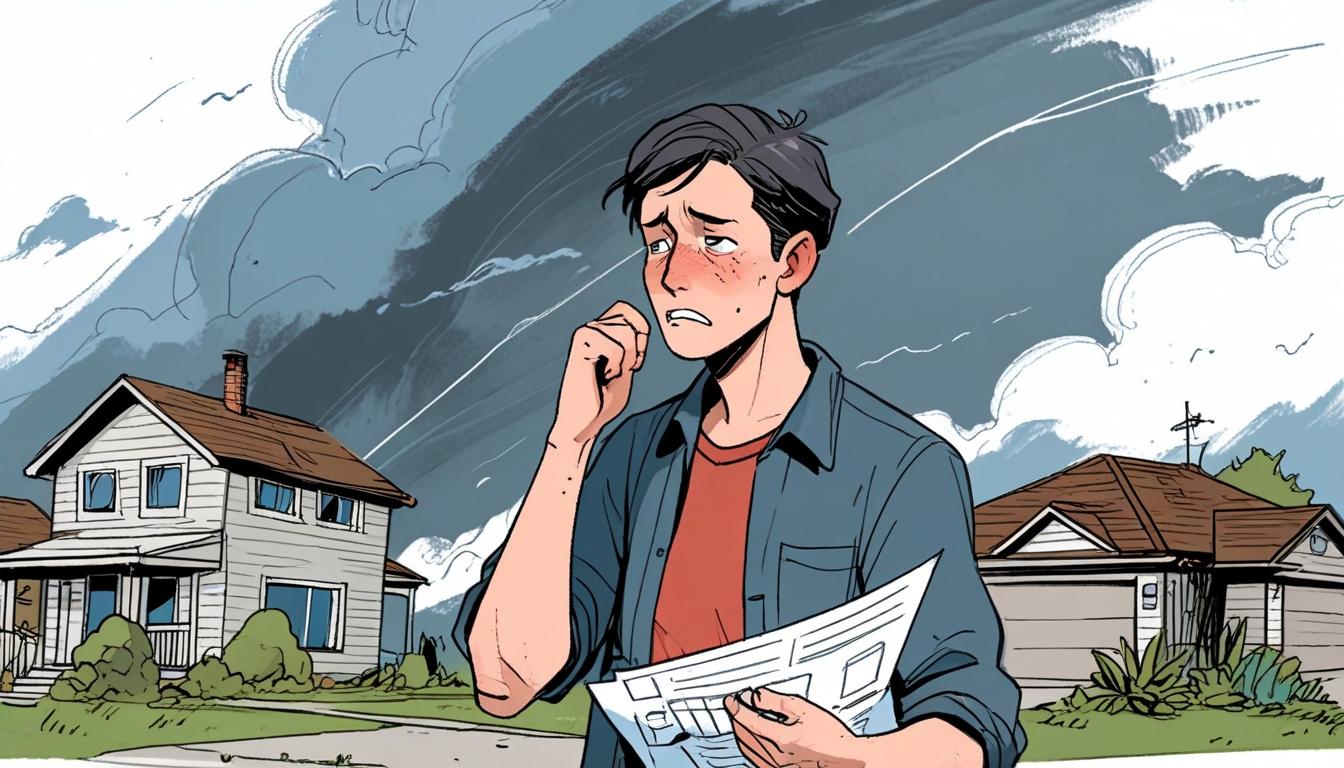Concerns have emerged about ambiguous definitions in home insurance policies that could lead to claim rejections for storm and flood damage, as revealed by consumer group Which?.
Concerns have been raised regarding the potential rejection of insurance claims for storm and flood damage due to ambiguous definitions in home insurance policies. The consumer group Which? has conducted an analysis of 133 home insurance policies from 67 providers, revealing that nearly a third, specifically 32%, contain definitions of flooding that may be deemed potentially unfair. Moreover, 20% of the reviewed policies include similarly questionable definitions related to storm damage.
According to Which?, the definitions of flood may be problematic if they stipulate that water must enter a property suddenly, thereby excluding slower, gradual water ingress, as described in their findings. For instance, if water infiltration occurs due to non-natural events like a burst water main, some policies might not recognize it as a legitimate flood claim. The industry also raises issues with storm definitions, where particular requirements—such as the necessity of high winds for a storm to have occurred—may lead to unjust claim denials.
The analysis found that more than half of the home insurance policies (56%) did not offer a clear definition of a flood, and a third (32%) failed to define a storm, creating uncertainty for policyholders regarding what their insurance actually covers.
Which? referred to various expert, industry, regulatory, and ombudsman guidelines in its review process. It noted specific examples where claims rejected by insurers were based on insufficient wind speeds or the slow nature of flood damage, as documented by the Financial Ombudsman Service (FOS).
In a survey conducted by Which?, over two-thirds (69%) of respondents defined a flood as any situation where water enters and accumulates in a home, regardless of the speed of ingress. Additionally, three-fifths (60%) considered a storm to involve a range of extreme weather conditions that could occur independently.
Which? is urging the Financial Conduct Authority (FCA) to investigate the compliance of storm and flood definitions with the Consumer Duty amid its ongoing review of claims handling procedures. Rocio Concha, director of policy and advocacy at Which?, stated, “Consumers rightly have common sense expectations of what should and shouldn’t be covered by storm and flood damage and they’re backed up on this by industry guidance. The FCA must use its review into claims handling to assess whether firms are complying with their obligations under the Consumer Duty – and shouldn’t hesitate to take tough action against those falling short.”
The Financial Ombudsman Service indicated that insurers should treat consumers fairly, especially when dealing with the aftermath of storm or flood damage. A spokesperson advised that if consumers face issues with their insurers, they should initially file a formal complaint. If the issue remains unresolved, they are encouraged to utilise the free assistance of the ombudsman service.
Flood Re, a scheme aimed at enhancing affordable flood cover in household insurance policies, reported having supported over 600,000 households since its inception in 2016. Kelly Ostler-Coyle, head of communications and stakeholder engagement at Flood Re, mentioned that their flood definition was established in collaboration with the insurance industry and the government prior to the 2014 Water Act.
The FCA is currently evaluating insurers’ claims handling, focusing on whether their systems effectively lead to good consumer outcomes. The findings from this review are expected to be published in the second quarter of 2025 and will include an assessment of claims related to storm damage.
An FCA spokesperson underscored the importance of understandable insurance products, noting, “Insurers should handle claims quickly and fairly and make sure customers understand what their cover includes, but it is vital people check for any exclusions before arranging protection.”
The Association of British Insurers (ABI) acknowledged the variability in how insurers classify storm damage, stating that their guidelines, including wind speed thresholds derived from the Beaufort wind force scale, are not obligatory and can differ among insurers. While most building insurance covers flooding, ABI clarified that water damage from predictable events such as rising damp typically falls outside of this coverage. The insurance industry reported a record payout of £585 million for weather-related damages to homes in 2024, signifying their commitment to aiding customers during adverse situations.
Source: Noah Wire Services
- https://www.allstate.com/resources/home-insurance/storm-and-wind-damage – This article explains the typical coverage for storm damage in home insurance policies, including wind, hail, and lightning, but highlights that flooding and earthquakes are generally not covered.
- https://cdsoncall.com/blog/does-home-insurance-cover-storm-damage/ – This blog post discusses what types of storm damage are covered under homeowners insurance, emphasizing that while wind and hail are typically covered, flooding requires separate insurance.
- https://insurance.maryland.gov/Consumer/Documents/publications/weatherloss.pdf – This document clarifies that standard homeowner’s insurance policies do not cover flood damage and that separate flood insurance is required, which aligns with concerns about ambiguous definitions.
- https://www.associationofbritishinsurers.org.uk/ – The Association of British Insurers provides guidelines on insurance claims and coverage, which can include variable definitions of storm damage based on wind speed thresholds.
- https://www.fca.org.uk/ – The Financial Conduct Authority is involved in regulating insurance practices and ensuring compliance with consumer duties, which is relevant to concerns about ambiguous policy definitions.
Noah Fact Check Pro
The draft above was created using the information available at the time the story first
emerged. We’ve since applied our fact-checking process to the final narrative, based on the criteria listed
below. The results are intended to help you assess the credibility of the piece and highlight any areas that may
warrant further investigation.
Freshness check
Score:
8
Notes:
The content includes recent data, such as the £585 million payout for weather-related damages in 2024, and mentions ongoing regulatory reviews expected in 2025. However, some references are to policies or schemes established earlier, like Flood Re in 2016.
Quotes check
Score:
9
Notes:
Direct quotes from Rocio Concha of Which? and other officials are included, but their original sources or earliest known references were not found online. However, the quotes are specific and likely to be from recent communications.
Source reliability
Score:
10
Notes:
The narrative originates from The Independent, a well-known reputable publication. It also references other reliable sources such as Which?, the Financial Conduct Authority, and the Financial Ombudsman Service.
Plausability check
Score:
9
Notes:
The claims about insurance policy definitions and their potential impact on claimants are plausible and supported by industry guidelines. The only uncertainty lies in the outcomes of ongoing regulatory reviews.
Overall assessment
Verdict (FAIL, OPEN, PASS): PASS
Confidence (LOW, MEDIUM, HIGH): HIGH
Summary:
The narrative appears to be well-researched and timely, with reliable sources. It provides plausible and supported claims about insurance policy issues. The quotes are recent and from credible figures, contributing to a strong overall credibility.













